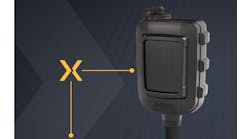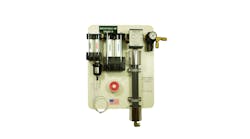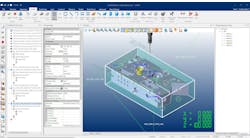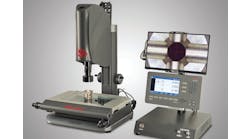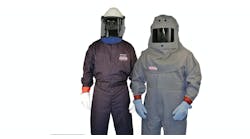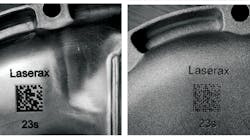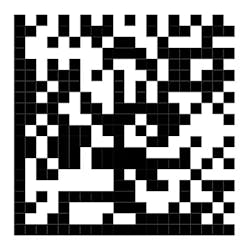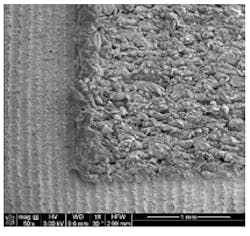There is a gap in the manufacturing supply chain: buyers of manufactured parts want product consistency and traceability; manufacturers want process consistency, and high productivity, and they calculate that added-value products will ensure high margins. The hope for both buyers and suppliers is that technology will close the gap in their expectations.
A developer of industrial laser technologies (for cleaning, marking, cutting, and welding) has introduced a patent-pending process for product marking that it describes as “shotblast-resistant” — such that high-volume producers of automotive castings can provide the product traceability that OEMs expect without altering their processing and handling practices.
Laserax reportedly devoted three years of research and product development with metalcasters before introducing the shotblast-resistant marking system in October. The result is a system that allows the part manufacturers to apply permanent identifiers directly on the casting. The developer credited two metalcasters — Cascade Diecasting Group and Mercury Marine — with the project’s success.
A typical Data Matrix Code.
“Maintaining the legibility of a part identifier through shot blasting was no small feat. It involved testing several parameters. Many iterations were required. Many hypotheses were formulated and rejected based on the test results,” explained Alex Fraser, Laserax CTO.
The problem for metalcasters centers on the demands of manufacturers (and particularly automotive groups) for direct part markings at the point when castings are extracted from a die or mold; this ensures the buyer complete traceability through the supply chain. Information like data matrix codes (DMC), quick response (QR) codes, or linear bar codes are imprinted on the parts as a necessary element of
An example of pale and dark markings, seen via SEM.
quality control and customer service, but those imprints may be damaged or lost during subsequent surface treatment phases of casting production, such as in shotblasting.
According to Laserax, imprinting the cast parts using its patent-pending laser technology ensures the survivability of the codes, and allows the markings to maintain greater contrast than standard marking processes achieve.
Data matrix codes are the best type of barcode for industrial applications, Laserax noted, because the protocol is a well-established and contains high information-density, and that information remains intact even if up to 50% of the code is damaged. The number of rows and columns in the DMC determines its information storage capacity.
Laser marking uses light as a way to deliver a huge volume of energy per unit to the metal, such that the targeted metal surface is effectively infused with the code. Textured impressions (“crests and troughs”) can be created on the surface of the part as the metal solidifies, and these patterns redirect beams in all directions, resulting in a pale mark that may not be “read” reliably.
Alternatively, a less controlled solidification process for the metal creates protruding peaks and crevices. Deep crevices and high peaks reflect much less light, resulting in a darker mark.
To maintain the legibility of the DMC throughout the shotblast process, it is necessary to protect the dark areas of the codes. Otherwise, the high and low points in the mark would be rounded or dulled, thus reducing the darkness of the marks.
The Laserax patent-pending process helps to preserve those high and low points from the blast media. Pockets are embedded into the metal surface, which creates walls around each dark cell. So, the marks maintain a better contrast level than those created with standard laser marking.
Extensive testing was conducted to arrive at the best parameters for laser marking with the Laserax patent-pending process. The marking time depends on the number of cells in the DMC to be imprinted, the number of alpha-numerical and numerical characters in the code, and the pocket size and pocket depth to be imposed.
Product traceability is rising in the lists of priorities set by industrial buyers, and fulfilling their customers’ expectations is more like an objective than an obstacle for conscientious metalcasters. Having technological resources and capable development partners is how they’re able to transcend that gap in the supply chain.
